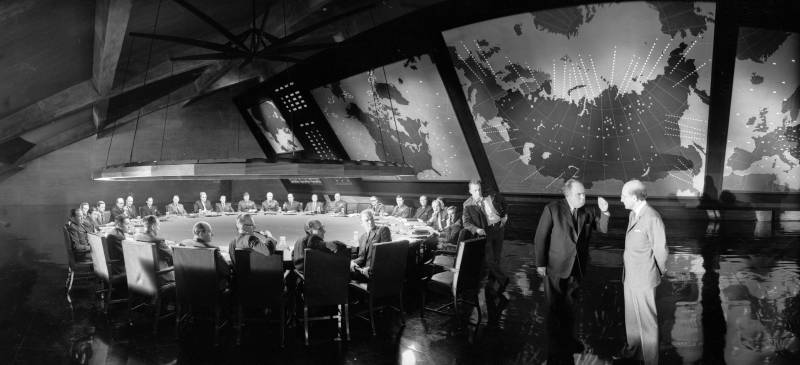Threads, produced by the BBC, served as a wake-up call to British audiences. It depicted a U.S. vs. Soviet Union nuclear battle in which America’s NATO allies amounted to collateral damage.
And while the effects were enough to traumatize audiences in Britain, they couldn’t hold a candle to the ones in ABC TV’s $7 million shocker, The Day After.
At a time of heightened East/West tensions, the two-hour show (the last hour presented without commercial interruption) was designed to show the aftermath of an all-out nuclear war. And did it ever.
I remember the shock of seeing the blast in that telecast, and then the horror, a moment later, of a second blast—a second mushroom cloud rising behind the characters—then a third. It was a possibility no duck-and-cover drill in my youth had ever mentioned.
By film’s end, nearly all the characters are dead or dying—an outcome witnessed by 100 million Americans on Sunday, Nov. 20, 1983, at the time the largest audience ever to watch a television film.
And the day after The Day After, there was a new national dialogue about nuclear weapons—one that affected public policy. President Ronald Reagan wrote in his diary of being “greatly depressed” by the film. After signing a nuclear-non-proliferation treaty a few years later, he sent a telegram to the director saying: “Don’t think your movie didn’t have any part of this, because it did.”
None of this kept Hollywood from going its own, more escapist way. Going Reagan one better in Superman IV, The Quest for Peace, Christopher Reeve’s Man of Steel addressed a special session of the U.N. saying that he’s going to do what governments have been unwilling or unable to do: “Rid our planet of all nuclear weapons.”
He then grabbed thousands of intercontinental ballistic missiles in midair (the unwilling governments having helpfully launched them) and put them in a big skynet (literally a net in the sky, not the Terminator Skynet) after which he hurled them at the sun.
This was, presumably, good for the planet, less good for blockbustering. After all, if you get rid of the world’s atomic weapons, how’s Will Smith going to neutralize the alien invaders in Independence Day? And in Armageddon, the good guys needed weapons of mass destruction for the destruction-of-a-cosmic-mass (an asteroid on a collision course with Earth).
Not to mention that superhero flicks would have to look elsewhere for big finishes—no Dark Knight Rising with A-bomb in tow, to spirit it to sea and save Gotham. No Iron Man slamming a sky-portal shut with a nuke in The Avengers. No Wolverine (working, as always, on a more intimate scale) saving a single Japanese soldier at Nagasaki from the blast only he knew was on the way.
All of those plots are admittedly pretty silly and, again, not responsive to our own era’s heightened world tensions.
Still, if Hollywood isn’t making new nuclear films, some harrowing old ones have recently surfaced—declassified just as they were turning to dust. They’re footage shot by military researchers of nuclear tests conducted between 1945 and 1962.
More than 100 are available for viewing on YouTube from the Lawrence Livermore National Laboratory, which is analyzing them with computers and discovering that the readings made by scientists decades ago—readings on which computer simulations of current weaponry are based—are off by as much as 30 percent.

9(MDAxOTAwOTE4MDEyMTkxMDAzNjczZDljZA004))

